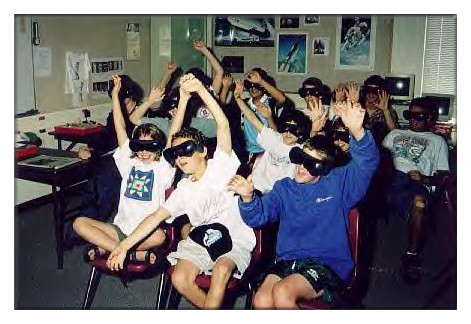Several Emerging Trends for Future Interactive Classroom
Posted: Mar. 30th, 2017
Technology has already had a massive impact on education - today's students enjoy advantages that were unheard of a couple of decades ago. Today, we'll examine several emerging trends which will have an impact on the interactive classroom over the next few years.
The Internet of Things (IoT) will continue to have an impact on all levels of society, and education is no exception. In the last year, over 5.5 million devices were connected each day - analysts expect this trend to continue, with 21 billion "things" online by 2020. In schools, we can expect to see several uses, including lighting, pupil registration systems, and instructional devices.
Users will continue to demand an Always-On experience. As educators continue to find uses for devices and apps, adequate network support becomes vital. This means providing reliable wifi services outside the classroom, such as in playgrounds, school gyms, and assembly halls.
Intelligent spaces that respond to the presence of users will boost productivity. For instance, a classroom that registers the presence of a teacher, can adjust the configuration of software and hardware to meet their teaching requirements. This saves valuable time and allows the teacher to concentrate on teaching. This technology also exists to make this possible (through mobile devices and ad-hoc networking). This concept can be extended to students, pushing notifications to their devices to remind them about homework.
Wearables and other location-aware devices allow educators to track the position of users (such as students). This allows them to detect truancy or poor attendance, which are both strong predictors of academic performance. Using networked sensors on school grounds, teachers will be able to direct their attention to pupils who are at risk. This facilitates timely intervention, preventing the problem from snowballing.
Although virtual reality and augmented reality are still in their early stages, they have huge potential as teaching tools. They can help to shed new light on complex topics and increase student engagement. We can expect to see more practical applications emerging, together with affordable, reliable hardware.
As schools continue to add IoT devices to their networks, the number of networked devices students bring to school will also increase. In addition to smartphones and laptops, we can expect to see students with tablets and wearable devices. Many students already bring these devices to school - if current trends continue, we can expect to see the majority of students with multiple devices within the next few years.
The immediate consequence is a demand for stronger networks. As the number of connected devices in schools increase so does network traffic. This means that schools will have to make provisions for greater connectivity, increasing the number of wireless hotspots, and providing the network infrastructure to carry the increased data load.
Today's students are extremely adept with technology and are able to use their experience to rapidly learn new interfaces. This offers an excellent opportunity to increase engagement in class, by integrating familiar devices into lesson plans.
The rise of interactive classrooms offers an opportunity to increase student engagement and competence across all core subjects.
Previous:3 Major Driving Factors In Interactive Whiteboard Market Expansion
Next:How Technology Is Revolutionizing Collaborative Learning In Classrooms
